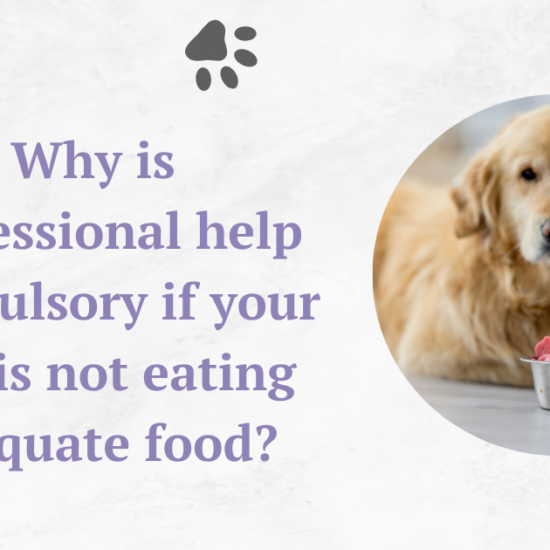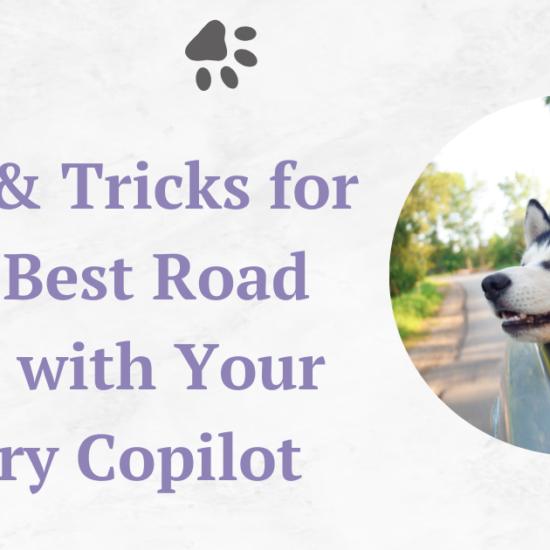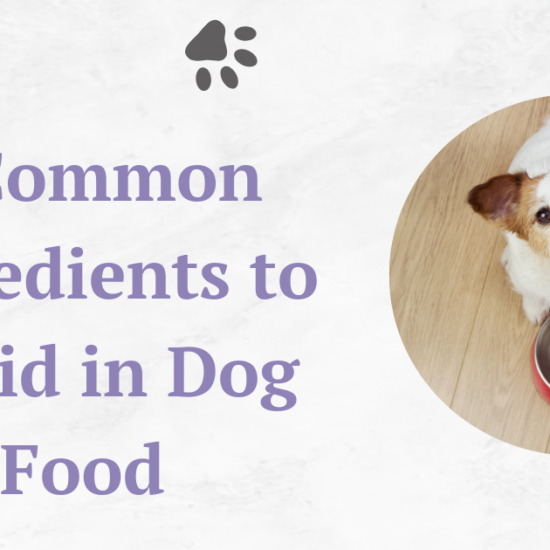Recent attention and acclaim have focused on ‘emotional Support animals’ that are sometimes also called ‘mental health animals’ These special animals comfort and support their owners, improving mental health and well-being.
Table of Contents
Introduction
Our families love pets. Your pet’s health is a top priority, whether they’re furry, playful, feathery, or scaly. Pets may need surgery like humans. Knowing how to prepare your pet for surgery and care for them afterward is crucial, whether it’s spaying/neutering or a more complex surgery to treat an illness or injury. This comprehensive guide to pet surgery will give you the information and tips you need to make your pet’s surgery a success.
Understanding Pet Surgery
Pet surgery is essential to our pets’ health. It includes many procedures with specific purposes. This section discusses pet surgeries, their benefits and risks, and how to choose a veterinary surgeon.
5 Types of Pet Surgery
- Standard Surgery

To keep your pet healthy, routine surgeries are often done. These procedures are crucial for disease prevention and population control.
One of the most common surgeries is spaying and neutering. They control pet populations and reduce disease and behavioral risks.
Periodontal disease, which can cause pain and other health issues, can be prevented with regular dental cleanings.
Vaccinations: While not surgery, vaccinations protect your pet from many diseases.
- Elective Surgeries
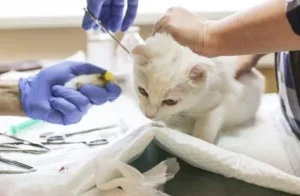
Non-medical or cosmetic surgeries are elective. These controversial procedures are chosen by some pet owners.
- Ear Cropping: To achieve a certain look, a dog’s ear is cropped. Many countries have banned or discouraged it as unnecessary.
- Tail Docking: For cosmetic reasons, dogs’ tails are surgically docked. Like ear cropping, it has been criticized and banned in some places.
- Emergency Surgery

Pets undergo emergency surgeries to save their lives. They often follow trauma or acute illness. Trauma surgery repairs injuries from falls, accidents, and animal attacks. Emergency surgeries for intestinal blockages or torsions can save pets’ lives.
- Orthopedic Surgery

Orthopedic surgeries treat bones and joints. These procedures improve mobility and correct musculoskeletal issues.
Hip Replacement: Dogs with hip dysplasia or severe joint degeneration often undergo hip replacement surgery. It can greatly improve their lives.
ACL Repair: Dogs with ligament injuries undergo ACL repair surgery to stabilize their knee joints and improve mobility.
- Soft Tissue Surgeries
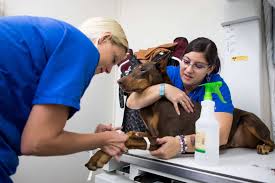
Soft tissue surgeries involve organs and tissues other than bones and joints. Many health conditions require them. Tumor removal is essential for pet cancer treatment. Pets with digestive issues may need surgery to remove obstructions, foreign bodies, or gastric torsions.
Benefits and Risks of Pet Surgery
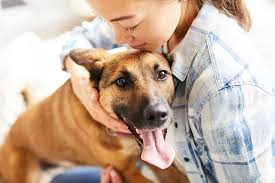
Benefits :
Quality of Life: Surgery reduces pain and improves your pet’s quality of life.
Disease Treatment: Surgery can prevent or treat diseases from worsening.
Population Control: Spaying and neutering reduce pet populations and homelessness.
Risks:
Anesthesia Complications: Surgery requires anesthesia, which can cause allergic reactions or respiratory issues.
Infection: Post-operative infections require additional treatment. Pain, swelling, and bleeding may occur after surgery in some pets.
Best Veterinarian Surgeon Selection
Finding the right veterinary surgeon is crucial to your pet’s surgical success. Consider these crucial factors:
Qualifications: Make sure your vet is licensed and qualified to perform your pet’s surgery. Board-certified surgeons receive additional surgical training.
Ask Questions: Ask your vet about surgery success, complications, and experience. A skilled surgeon will answer your questions clearly.
Trusted Sources: Consult trusted sources for referrals. Friends, family, and online pet owner reviews can reveal a surgeon’s reputation and care.
A Complete Guide to Preparing Pet for Surgery

A smooth and successful surgery requires preparing pet for surgery. To ensure your pet’s safety, comfort, and well-being, this process involves several steps. For preparing a pet for surgery, we’ll discuss consultation and evaluation, anesthesia and sedation, and pre-operative care.
Consult and Assess
Initial Consultation
Veterinarian consultations usually precede pet surgery. This appointment lets you discuss the surgery’s necessity and address any concerns.
The Initial Consultation:
Your vet will explain the surgery’s purpose, benefits, and risks.
Informed Consent: Showing that you understand the surgery and its risks is required.
Cost Estimate: Your vet will estimate surgery costs to help you budget.
Questions and Concerns: Ask every surgery question or concern that you might have.
Health Check
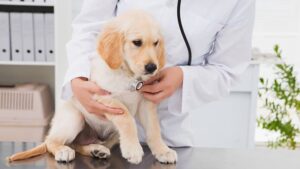
Before surgery, your pet must be healthy for a good outcome. A thorough health assessment by your vet will identify pre-existing conditions that may affect surgery or recovery.
Health Assessment
A thorough physical examination will assess your pet’s vital signs, heart, lungs, and general health.
Blood Work: Blood tests may be recommended to assess organ function and identify health issues that may affect anesthesia or surgery.
Radiographs or Imaging: X-rays or other imaging studies may be needed to assess the injury or condition.
Fasting
To avoid anesthesia complications, fasting is essential before surgery. Your pet will be sedated to stay still and pain-free during surgery. Avoiding regurgitation and aspiration during anesthesia is easier with an empty stomach.
Fasting Guidelines
Up to a few hours before surgery, your pet can drink water safely. However, your veterinarian’s water intake instructions must be followed.
Your vet will give you the pet’s fasting instructions. This usually involves fasting before surgery. Follow these instructions carefully to protect your pet.
Anesthesia/Sedation

Anesthesia Types
Understanding your pet’s surgical anesthesia is crucial. Your pet is unconscious and painless during the procedure with anesthesia. Your vet will decide on general or local anesthesia for your pet’s surgery.
Important Anesthesia Facts
Anesthesia risks include allergic reactions and side effects. Your vet will discuss these during the visit. To evaluate your pet’s organ function and health, pre-anesthetic blood work is essential. Your veterinarian can customize the anesthesia plan to your pet’s needs and reduce risks.
Meds
Sedation helps calm anxious pets before surgery. Veterinarian sedation reduces stress and anxiety in pets.
Key Sedation Aspects
Personalized Approach: Sedation protocols are tailored to your pet’s temperament, anxiety level, and surgery. Experts administer sedation to protect your pet. Monitoring equipment tracks vital signs during sedation.
Preoperative Care
Drugs

The vet may prescribe medications to prepare your pet for surgery. These drugs treat pain, infections, and anxiety.
Important Medication Considerations:
Follow Your Vet’s Directions: Follow your vet’s medication instructions. Incorrect medication administration can harm your pet’s recovery.
Discuss All Medications: Tell your vet about all medications and supplements your pet is taking to avoid drug interactions.
Diet and Exercise

Diet and exercise are crucial before surgery. Your vet will give you specific instructions based on your pet’s needs and surgery.
Diet and exercise guidelines may include:
Limited Exercise: To avoid injuries or complications, your pet may be advised to limit physical activity before surgery. To empty your pet’s stomach before surgery, your vet may recommend a special diet or fasting.
Home Preparation
Home comfort and peace are essential for your pet’s recovery. Your pet will need peace to recover from surgery.
Resting Area: Provide a comfortable bed or blanket for your pet in a private area.
Safety: Remove hazards and stressors to reduce injury risk.
Supplies: Keep medications, food, and water bowls near your pet’s bed.
Guide Your Pet Through Surgery Day

Surgery for your pet is a big day full of anticipation and worry. Preparing for this day can reduce stress and make it easier for you and your pet. This section covers surgery day details like arrival, admission, anesthesia, monitoring, post-operative instructions, and follow-up appointments.
Timely Arrival
A smooth surgery day requires arriving at the veterinary clinic on time. Being punctual helps the veterinary team manage time and complete your pet’s surgery on time.
Plan ahead: Consider traffic and weather when estimating clinic travel time.
Paperwork: Complete any required paperwork upon arrival to speed up admission.
Comforts
Comforting your pet with familiar items can reduce stress. In a new place, familiar smells and objects can comfort and reassure. To comfort your pet during recovery at the clinic, bring a soft blanket or bed from home. Bringing a favorite toy can distract and comfort them before and after surgery.
Monitoring/Anesthesia

Onboarding
Understanding anesthesia induction is crucial for peace of mind. The veterinary team carefully inducts anesthesia in several steps:
We’ll check your pet’s vital signs and perform any last-minute health checks before anesthesia.
Anesthetic Medication: IV or gas mask anesthesia induces unconsciousness. A breathing tube can be inserted during surgery to maintain airway clarity.
Monitoring Equipment: The veterinary team will continuously monitor your pet’s heart rate, blood pressure, oxygen levels, and temperature using specialized equipment.
Experts: Trained technicians or nurses will monitor your pet’s anesthesia during surgery and make adjustments as needed to ensure safety.
Comfort Items
To monitor your pet’s progress during surgery, communicate with your vet or team. This plan keeps you informed and addresses concerns.
Keys To Effective Communication
Contact Information: Give the clinic your current phone number so they can reach you.
Designated Contact Person: To avoid confusion, assign one family member to communicate with the veterinary team.
Updates: Ask the veterinary team how often you want surgery updates and whether you prefer phone calls or texts.
Post-Operation Advice

After surgery, your pet will recover. Your pet’s health and comfort depend on understanding and following post-operative instructions.
Recovery Plan
Pain Management: Talk to your vet about pain management. They may give your pet painkillers to help it recover.
Rest and Isolation: Give your pet a quiet, comfortable, and safe place to recover at home. Reduce stress by reducing noise and activity.
Wound Care: Your vet will give your pet wound care instructions, including cleaning and dressing changes.
Appointments With Vet

You must schedule follow-up appointments to track your pet’s recovery.
Discuss Follow-ups: Ask your vet about follow-up schedules during discharge. Suture removal, wound checks, and other evaluations may occur during these appointments.
Ask Questions: Address concerns, ask about your pet’s recovery, and get advice on returning to their routine at follow-up appointments.
After Surgery Pet Care for Fast Recovery
Your pet’s surgery is just the start of the journey. After surgery, caring for your pet is essential to their healing and well-being. This section covers homecoming, pain management, wound care, nutrition, and hydration after surgery.
Homecoming
Transport
Safely transporting your pet home after surgery is the first recovery step. Consider these suggestions:
Comfortable Carrier: Use a safe, comfortable carrier for small pets. To safely transport larger pets to your car, use a leash or harness.
Warmth: On cold days, keep your pet warm during the trip. Use a heated pad or blanket if needed.
Rest and Isolation
Make sure your pet has a quiet, safe, and isolated space to recover when you get home. Comfort and healing for your pet require this space.
Quiet Environment: Put your pet in a room without noise or activity. Close doors and windows to reduce distractions.
Comfort Items: Bring blankets and toys from the vet to your pet’s recovery area.
Isolation: To avoid unintentional rough play or contact that could slow healing, isolate your recovering pet from other pets.
Pain Control

Medications
Post-surgery pain management is essential. To comfort your pet, your vet will prescribe painkillers.
Administer as Directed: Follow your vet’s pain medication instructions. Avoid missing doses for consistent pain relief.
Beware of Side Effects: Drugs can cause drowsiness and gastrointestinal issues. Any suspicious reactions should be reported to your vet.
Watching
Recovery requires watching for signs of pain and discomfort in your pet. Restlessness, excessive panting, and vocalization can indicate pain in your pet.
Note: There might be affiliate links mentioned here. We may receive a commission if you purchase a product through an affiliate link. There is no additional charge for you. Please do your own research before making any online purchases.
Physical Examination: Gently check your pet’s incision site daily for redness, swelling, or discharge. Report concerns to your vet immediately.
Communication: Discuss your pet’s pain and recovery observations with your vet.
Wound Care
Wound care is essential for infection prevention and healing.
Incision Care
Clean and dress the incision as per your vet’s instructions.
Hygiene: Clean and dry the incision. If needed, gently clean discharge or debris with a clean, damp cloth or gauze.
Dressing Changes: Follow your vet’s dressing change instructions to avoid incision contamination or injury.
Avoiding Licking and Chewing
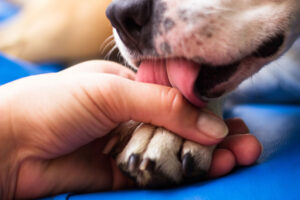
Pets may lick or chew their incisions, which can cause problems. Most veterinarians recommend an Elizabethan collar (cone) to keep your pet from reaching the incision. Make sure it fits snugly but comfortably. Some pets dislike the cone. Talk to your vet about incision-protecting pet clothing.
Hydration and Nutrition
Recovery requires proper nutrition and hydration for your pet.
Food
Consult your vet for post-surgery diet advice.
Prescribed Diet: Your vet may suggest a diet to aid healing and prevent stomach upset. Carefully follow these diet instructions.
To ensure proper nutrition, feed your pet smaller, more frequent meals throughout the day if they have a reduced appetite after surgery.
Hydration

Always provide your pet with clean, fresh water. A water bowl near your pet’s resting area will help them stay hydrated. Keep track of your pet’s water intake. Dehydration can slow healing, so contact your vet if your pet drinks less water.
Understanding Complications
It’s crucial to monitor your pet’s recovery after surgery. Some complications can occur after surgery, but most are uneventful. For your pet’s health and safety, you must recognize these complications and contact your vet immediately.
Infection

Common post-surgery complications include infections. It can occur in the body or at the surgical site, causing various symptoms:
Infection Signs: Redness, swelling, increased heat, discharge (especially thick, green, or foul-smelling), and pain around the incision site are signs of infection. Infections often cause fever. A pet thermometer can detect a fever, which is usually above 102.5°F (39.2°C).
If you see any of these signs, see a vet immediately. Untreated infections can worsen quickly.
Anaesthesia Issues
Anesthesia is necessary for surgery but can cause complications. Possible issues are rare, but important to know:
Vomiting: If your pet vomits after surgery, especially blood or dark vomit, it may be an anesthesia issue. Anesthesia reactions can cause disorientation, confusion, or labored breathing after surgery. Watch for extreme restlessness or confusion in your pet.
Contact your vet immediately if you notice these symptoms. Anesthesia complications can be fatal and require immediate treatment.
Injuries
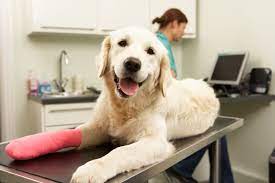
Monitoring the incision site helps identify wound healing issues:
Incision opening, separating, or exposing underlying tissues indicates wound dehiscence. This serious complication needs immediate veterinary care. Minor oozing is normal, but excessive or continuous bleeding should be addressed immediately. Watch the incision site while your pet recovers. Notify your vet of any issues.
When to Contact Vet

Urgent Issues
Contact your vet immediately if you notice any unusual or alarming symptoms after surgery. Reach out if you see:
Severe Pain: Your pet needs immediate attention if it is in severe pain, vocalizing, or in extreme discomfort.
Breathing problems: Choking, labored breathing, and other breathing issues are emergencies that need immediate attention.
Lethargy: Unresponsiveness in your pet may indicate problems.
Follow-up Plans
For recovery monitoring, your pet needs regular vet visits. Attend all follow-up appointments, even if your pet seems fine. These visits let your vet:
Assess Healing: Your veterinarian will check the surgical site for healing and address any concerns.
Adjust Medication: Your vet may need to adjust your pet’s pain or antibiotic medications based on their progress.
Answer Questions: Follow-up appointments are a great time to ask about your pet’s recovery.
Long-Term Recovery

The long-term recovery of your pet is as important as the immediate post-surgery period. Long-term recovery requires physical rehabilitation, emotional support, and gradual reintegration into daily life. This section discusses supporting your pet during this long healing process.
Physical Therapy
Physical therapy can help your pet recover from bone, joint, or soft tissue surgeries. Discuss physical therapy with your vet, who may recommend it for post-surgery care.
Key physical therapy elements:
Professional Advice: Consult a certified veterinary rehabilitation therapist to create and supervise a pet-specific rehabilitation program.
Range of Motion Exercises: These enhance your pet’s joint mobility and reduce stiffness after orthopedic surgery. Strengthening exercises target specific muscle groups to rebuild strength lost during recovery.
Exercise
Long-term recovery requires gradual exercise and activity reintroduction. When and how to resume your pet’s physical activity safely will be advised by your vet.
Vet’s Advice: Follow your vet’s advice on exercise restrictions and gradual activity increases.
Controlled Environment: Exercise in a fenced yard or on a leash to reduce injury risk during recovery.

Your pet needs comfort and reassurance during surgery and recovery to cope emotionally. Give your pet lots of cuddles and gentle petting to show you care. To help your pet relax, create a quiet, peaceful home.
Behavior Changes
Recovery may cause temporary behavioral changes in pets. This can include increased vocalization, appetite, or energy.
Patience: Let your pet adjust to their new situation. Their routines and behaviors may take time to return. Keep an eye out for behavioral changes and notify your vet. Some pain- or discomfort-related changes can be treated with medication or care plan adjustments.
Consult a Professional: If your pet’s behavioral changes persist or become problematic, consult a veterinary behaviorist or professional trainer for advice.
Preventative Care
Your pet’s long-term health goes beyond surgery and recovery. Maintaining health and preventing future issues require ongoing preventative care. This section covers preventative care, including dental, nutrition, exercise, and future health.
Health Maintenance
Regular Checkups
Maintaining routine vet visits helps detect and treat health issues early. These appointments allow your vet to monitor your pet’s health and spot issues before they become serious.
Regular Checkups

Physical Examination: Your vet will examine your pet’s health, vital signs, and potential issues.
Vaccinations and booster shots: Protect your pet from common diseases with vaccinations.
Parasite Control: Prevent fleas, ticks, and intestinal worms, which can be dangerous.
Dental Care
Prevention of dental issues that cause pain, discomfort, and other health issues requires prioritizing your pet’s dental health.
Regular Dental Cleanings: Your vet can remove plaque and tartar from your pet’s teeth. It prevents gum disease and tooth decay.
Home Dental Care: Follow your vet’s dental routine. Your pet may need dental treats, oral rinses, or brushing.
Diet and Fitness
A balanced diet is essential for your pet’s health. Proper nutrition boosts energy, immunity, and organ function.
High-Quality Food: Choose high-quality pet food for your young, senior, or special-diet pet.
Portion Control: Feed your pet the right amounts to avoid obesity and other health issues.
Consult Your Vet: Ask your vet about the best diet for your pet’s health and needs.
Exercise Schedule

Your pet needs regular exercise to stay active and healthy. Exercise prevents obesity and improves pet health.
Exercise your pet daily. Walks, playtime, and interactive toys stimulate them mentally and physically. Consider your pet’s age, breed, and physical condition when planning their exercise routine. Breeds need different amounts of exercise. To avoid boredom and encourage healthy, active living, offer a variety of activities.
FAQs
Why are pet routine surgeries important?
Spaying, neutering, dental cleanings, and vaccinations are routine pet surgeries. They are crucial for disease prevention, pet population control, and health.
When are pet elective surgeries considered?
Cosmetic elective surgeries are non-medical. Example: ear cropping and tail docking. These surgeries are controversial and may be banned in some areas.
What situations require pet emergency surgeries?
Pets undergo emergency surgeries to save their lives. Trauma surgery for accident injuries or life-saving intestinal blockage surgery are examples.
How do orthopedic surgeries help pets?
Orthopedic surgeries treat bones and joints. Hip replacements and ACL repairs can improve mobility and stabilize knee joints in pets with ligament injuries.
When are soft tissue surgeries needed?
Organ and tissue issues are treated by soft tissue surgeries. Pets need them to remove tumors, treat gastrointestinal issues, and fix other health issues.
What are pet surgery benefits?
Pet surgery improves quality of life, treats diseases, and controls populations through spaying and neutering.
What are pet surgery risks?
Pet surgery risks include anesthesia complications, infections, pain, swelling, and bleeding.
How do I pick a pet surgery vet?
Choose an experienced, licensed veterinarian for the surgery. Ask for success rates and trusted recommendations.
How should I prepare my pet for surgery?
Attend the initial consultation, fast as instructed, and follow your vet’s pre-operative care instructions to prepare your pet for surgery.
What should I do on my pet’s surgery day?
Arrive on time, give your pet comfort items, and communicate with the vet on surgery day. Anesthesia, monitoring, and post-op care instructions must be followed.
Conclusion
Pet surgery can be difficult, but with the right information and preparation, you can give your pet the best chance. Keep in touch with your vet, who is your best resource, and follow their advice. Your pet will be healthy and happy again with your love and care.





